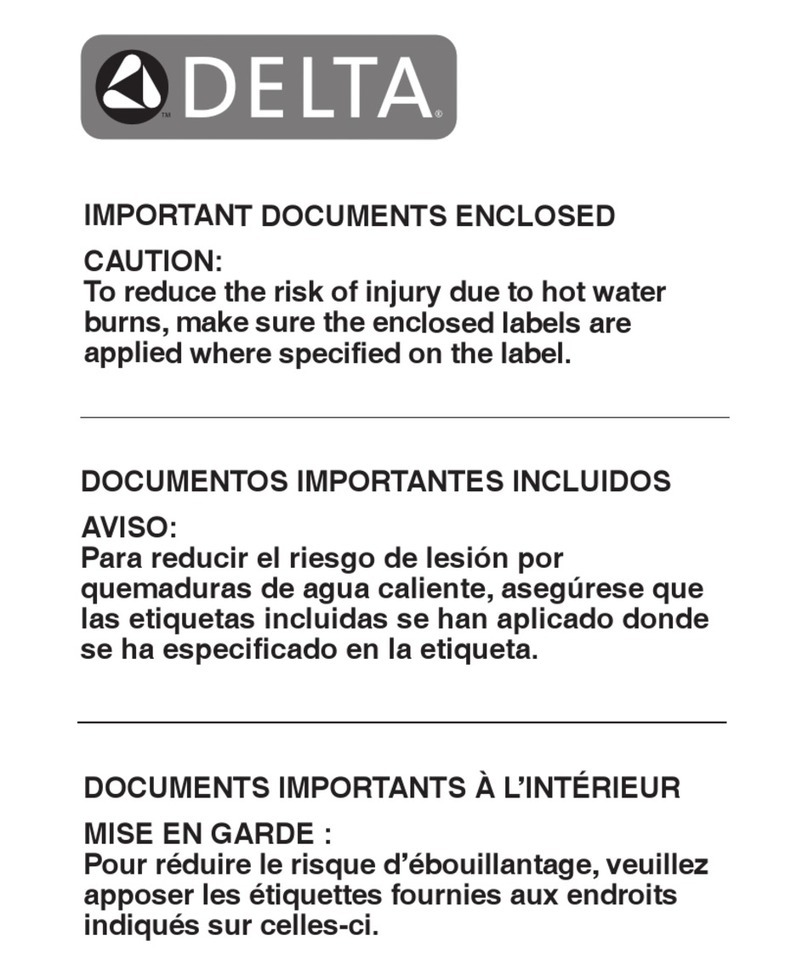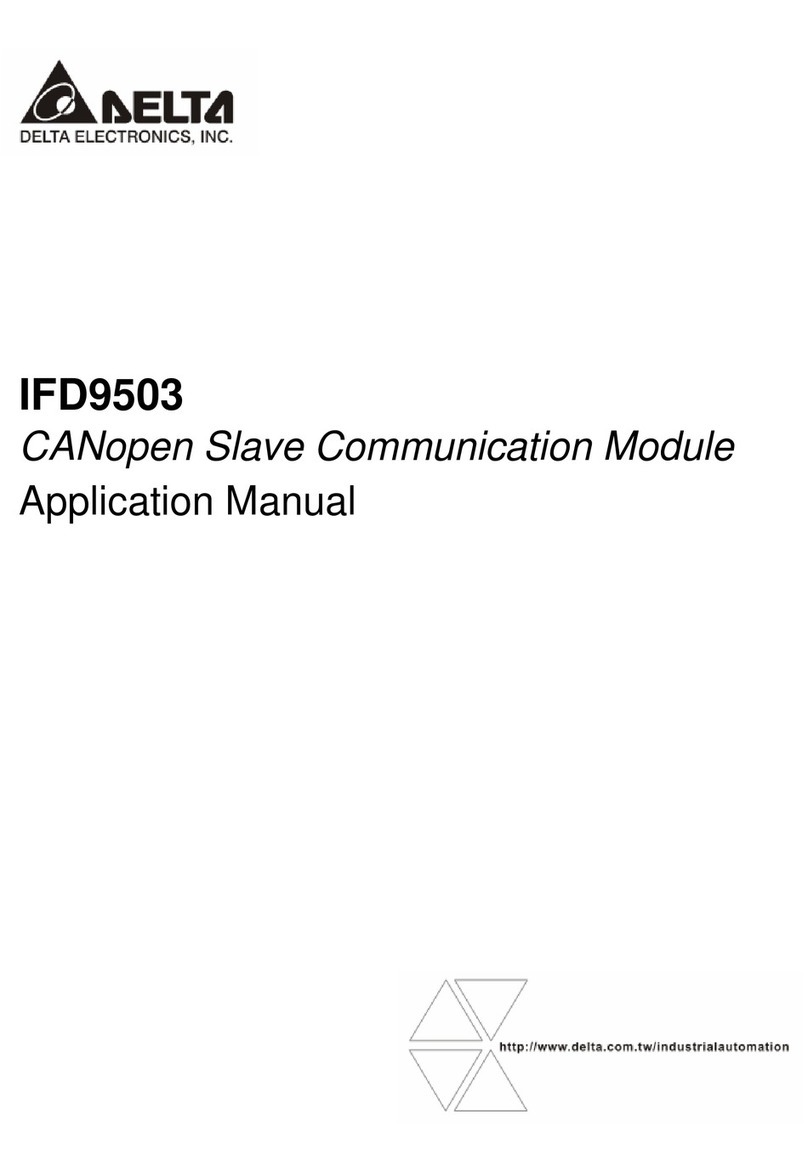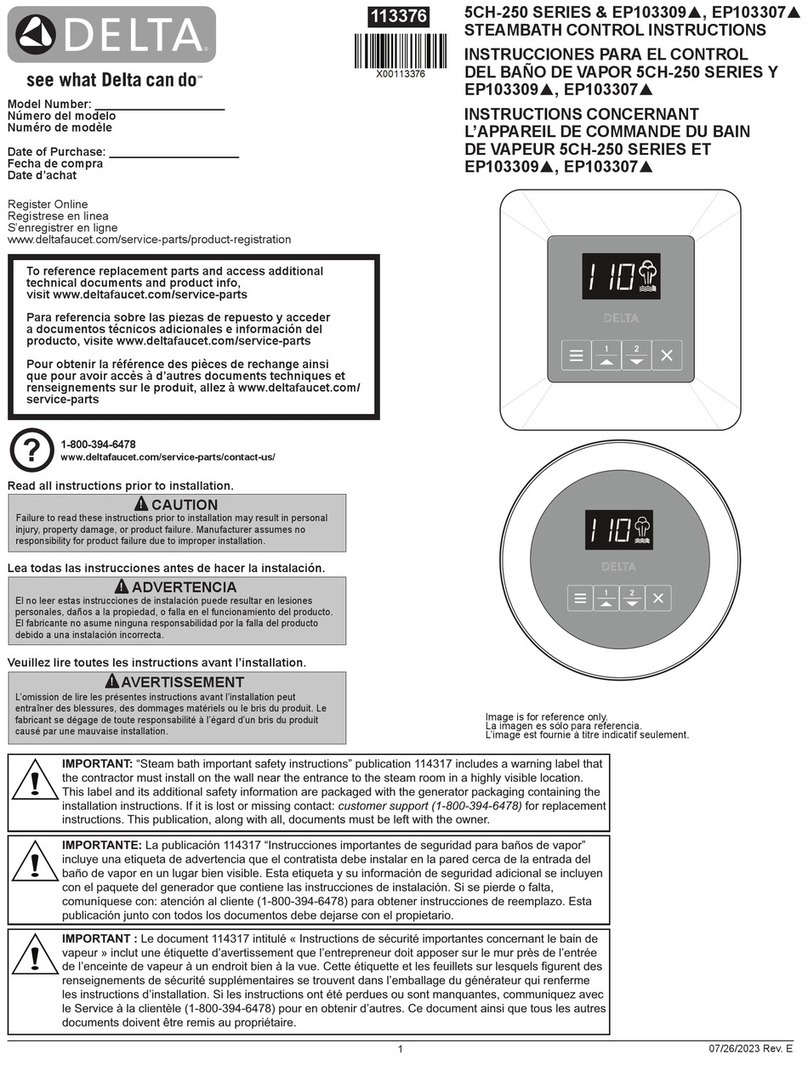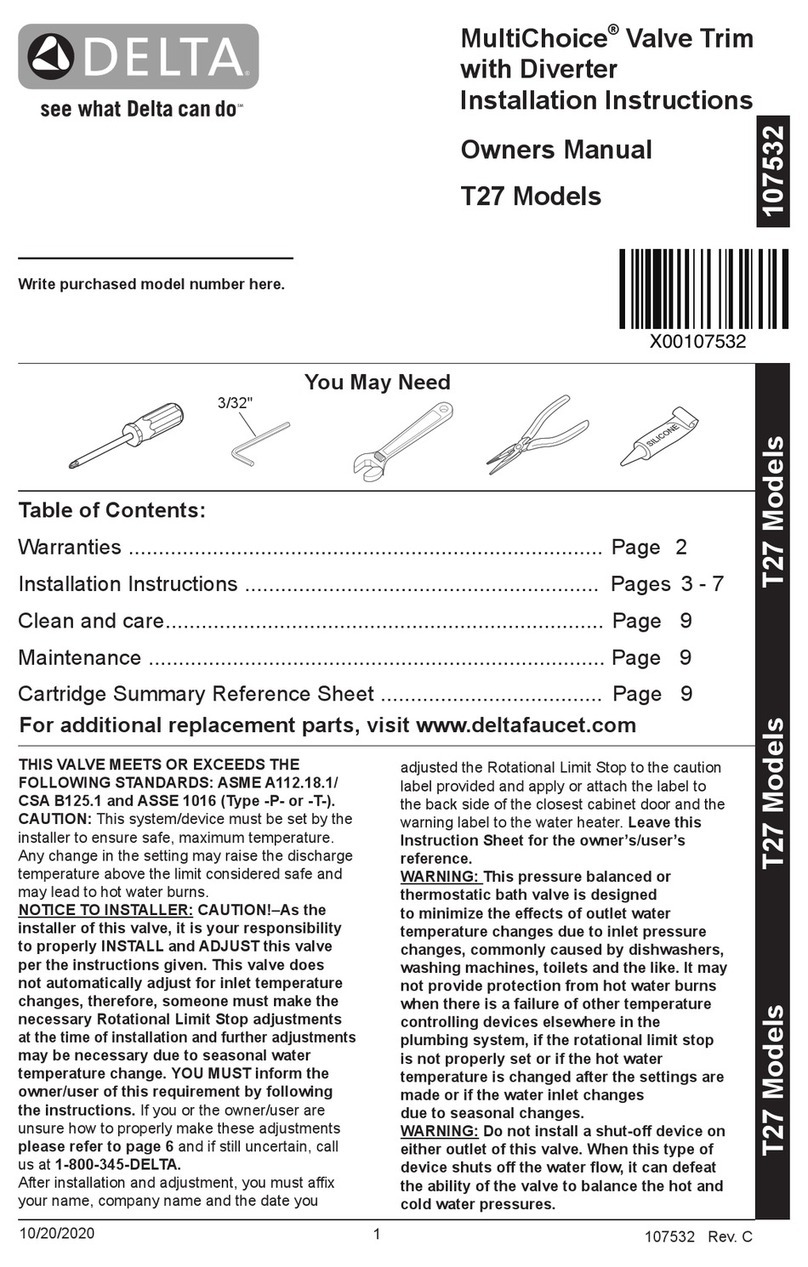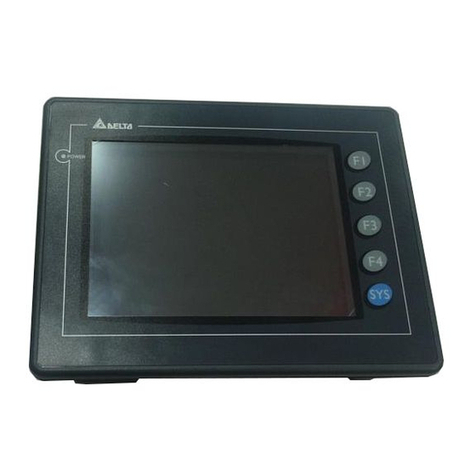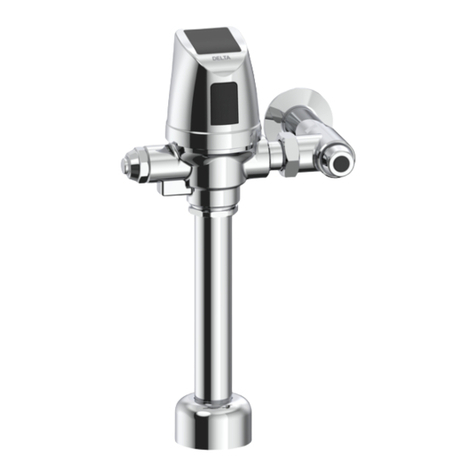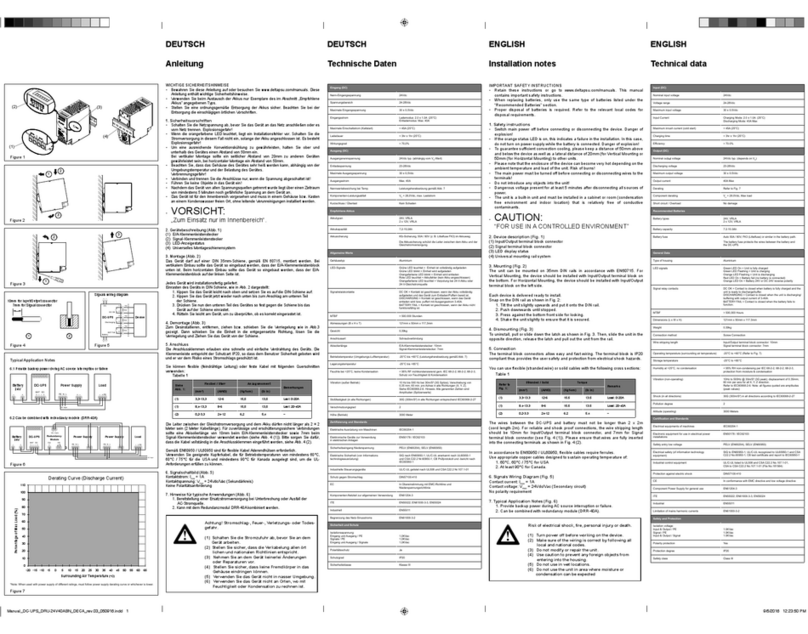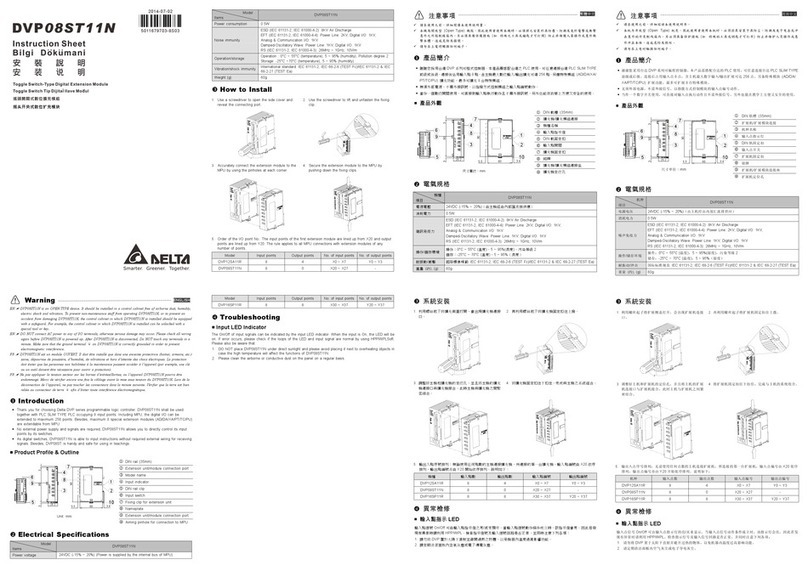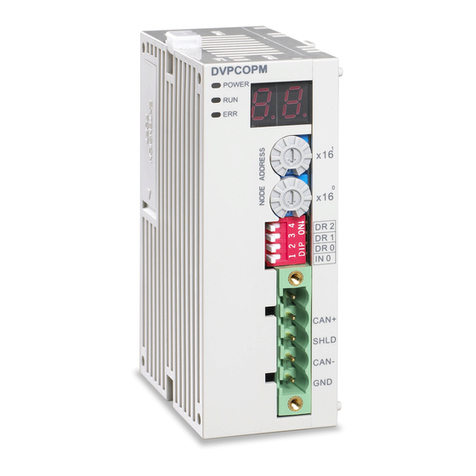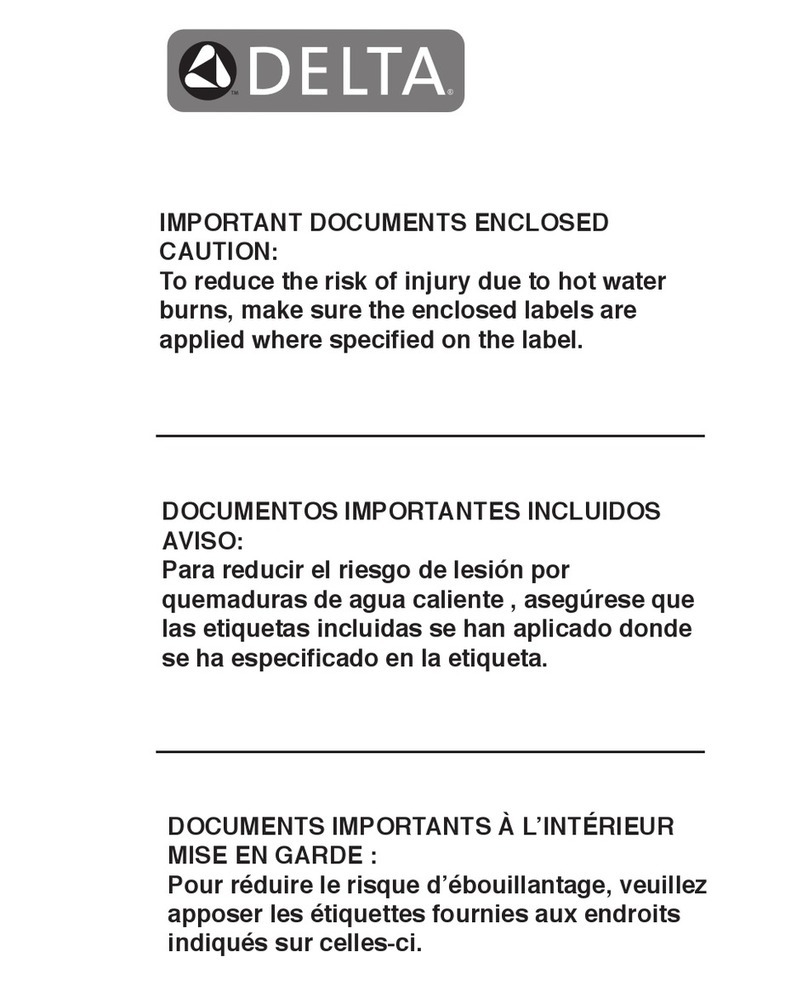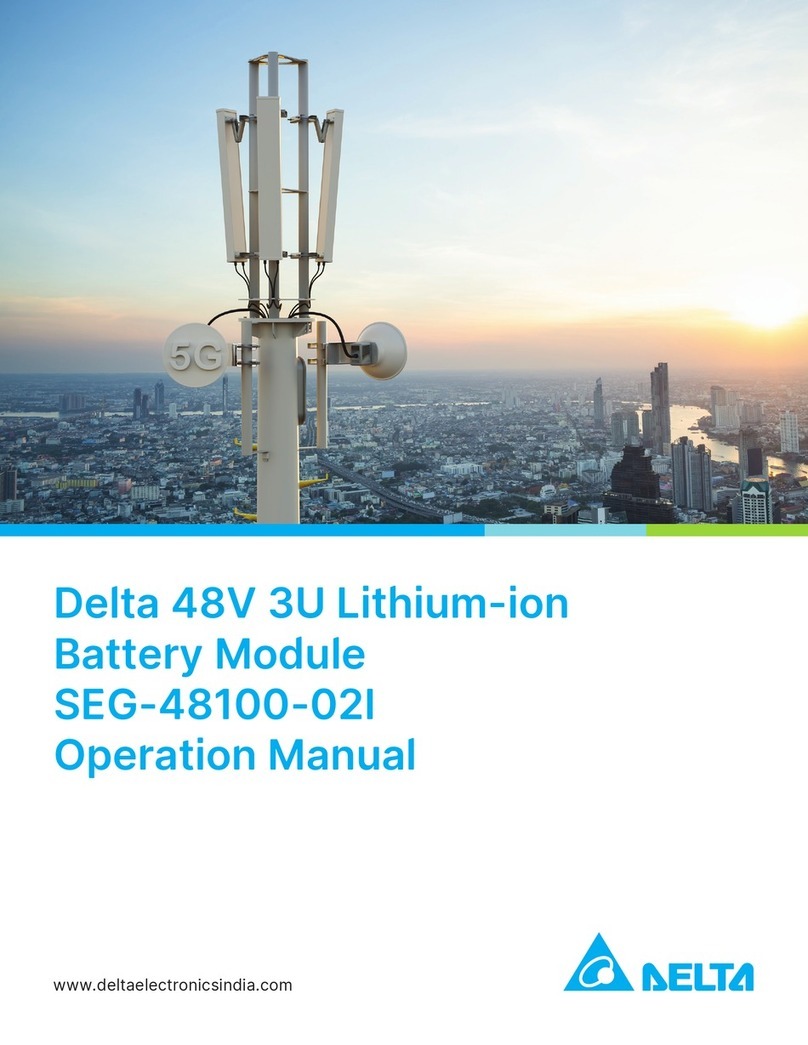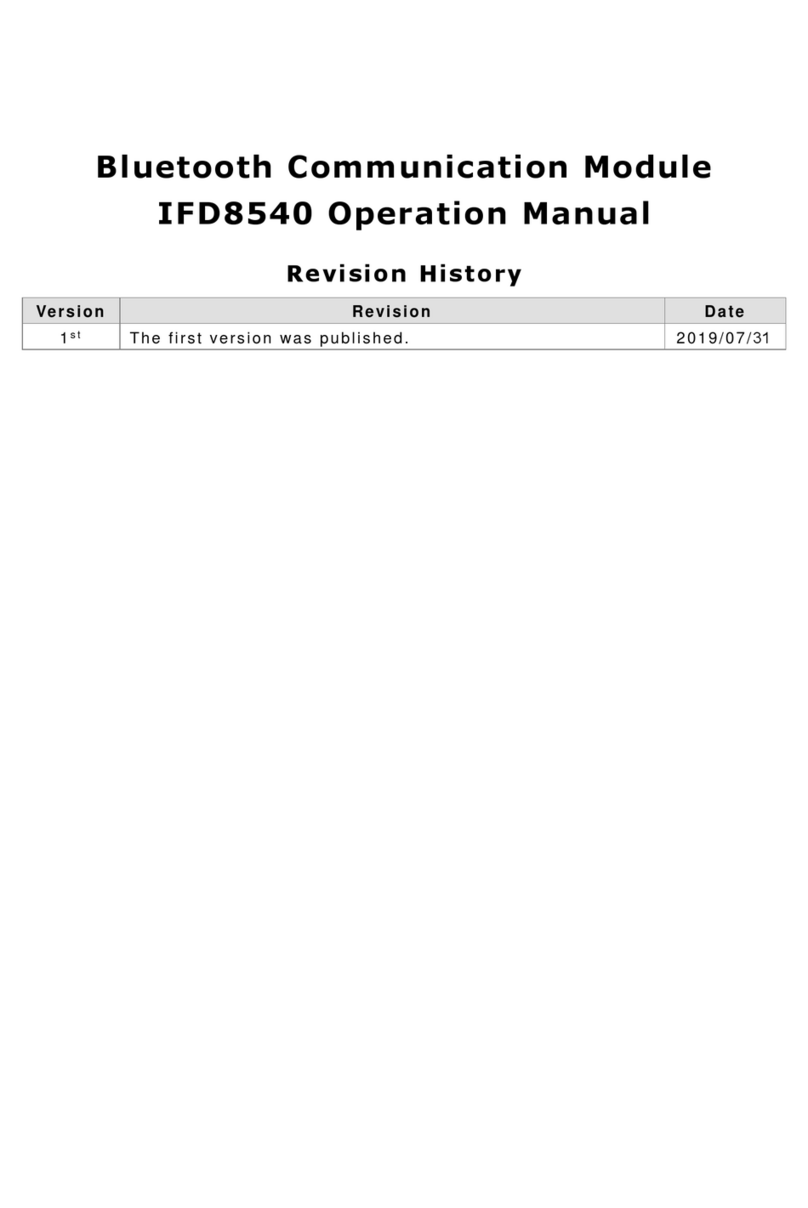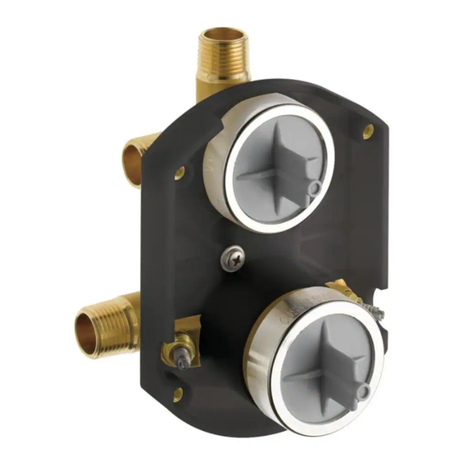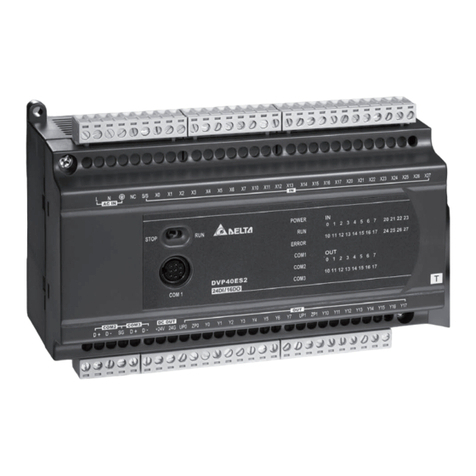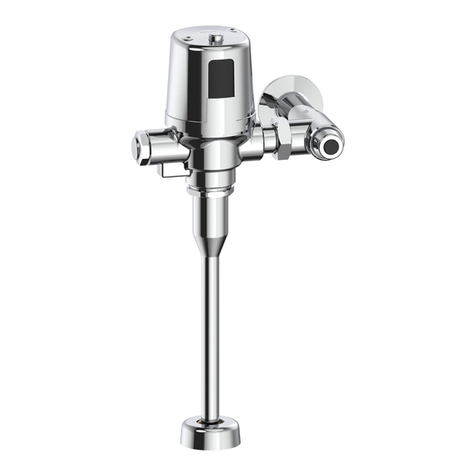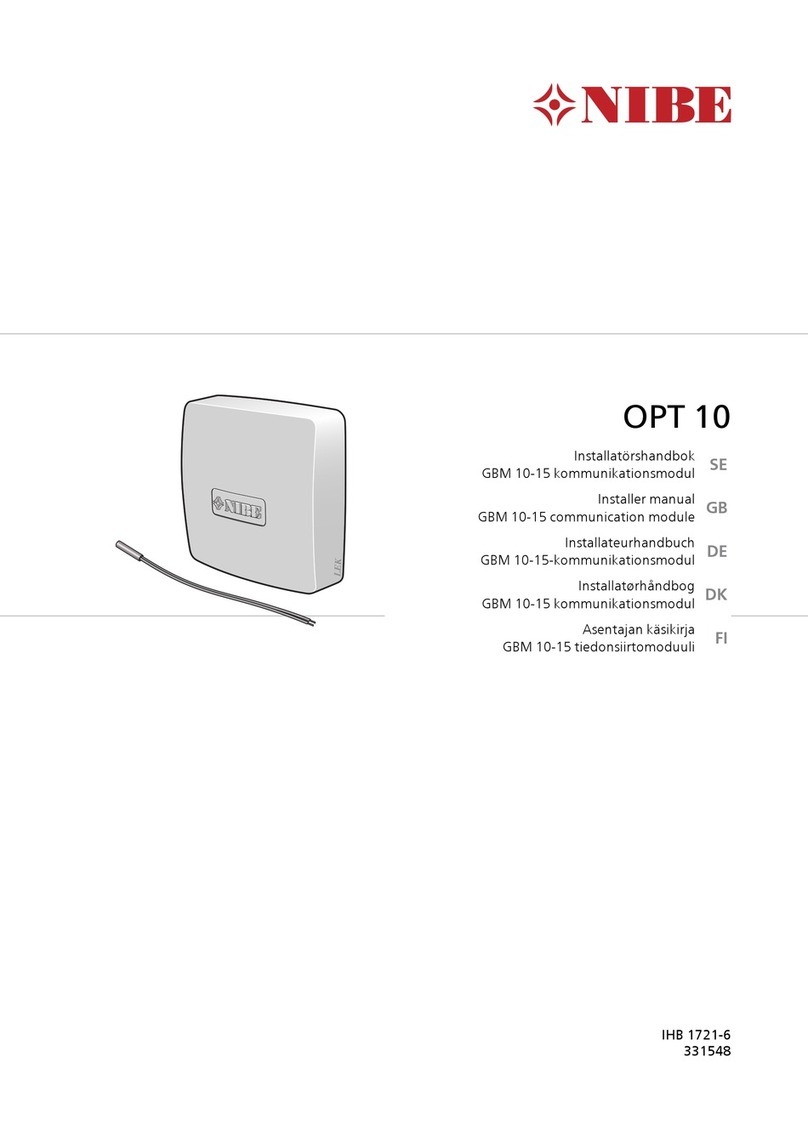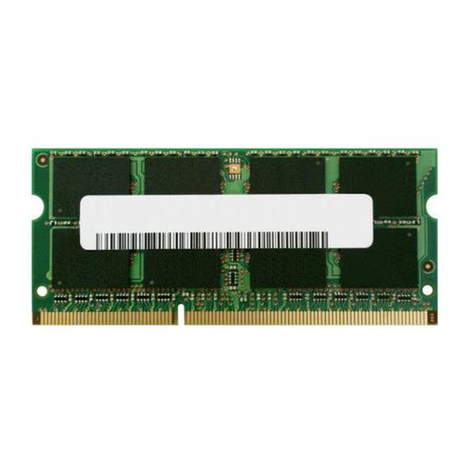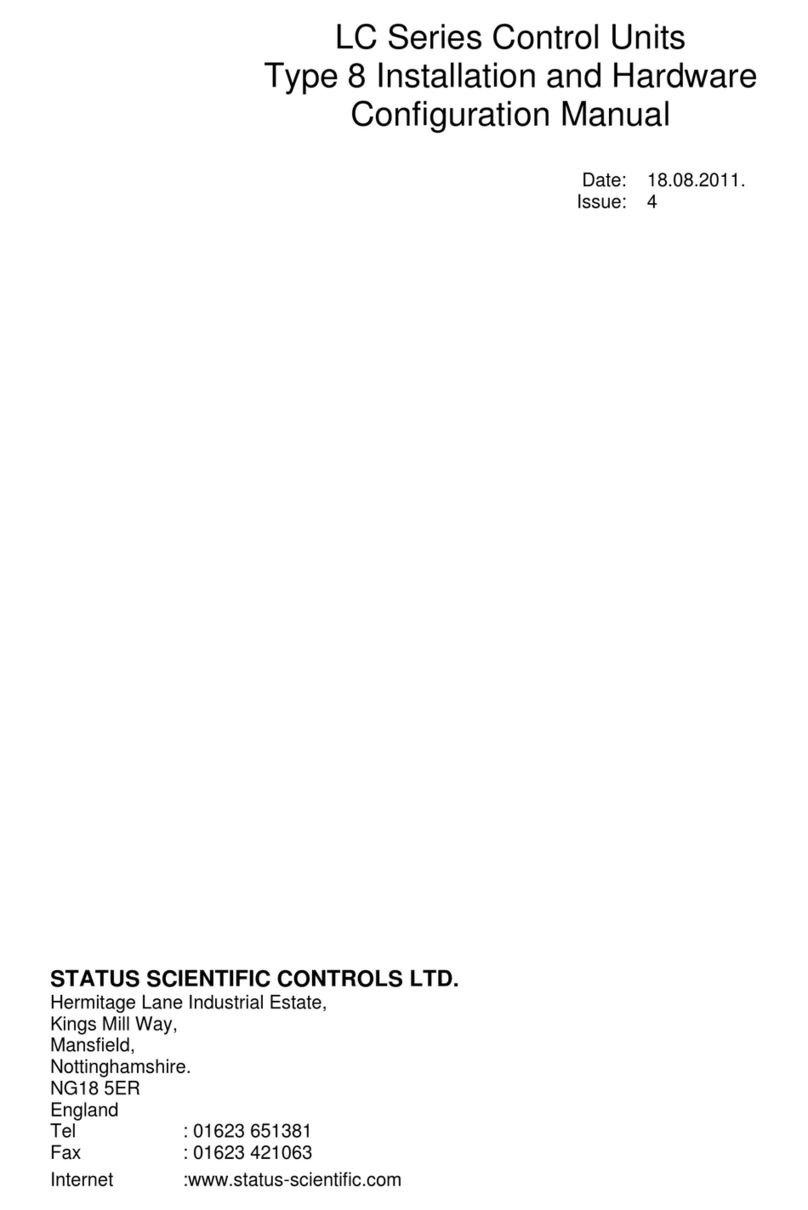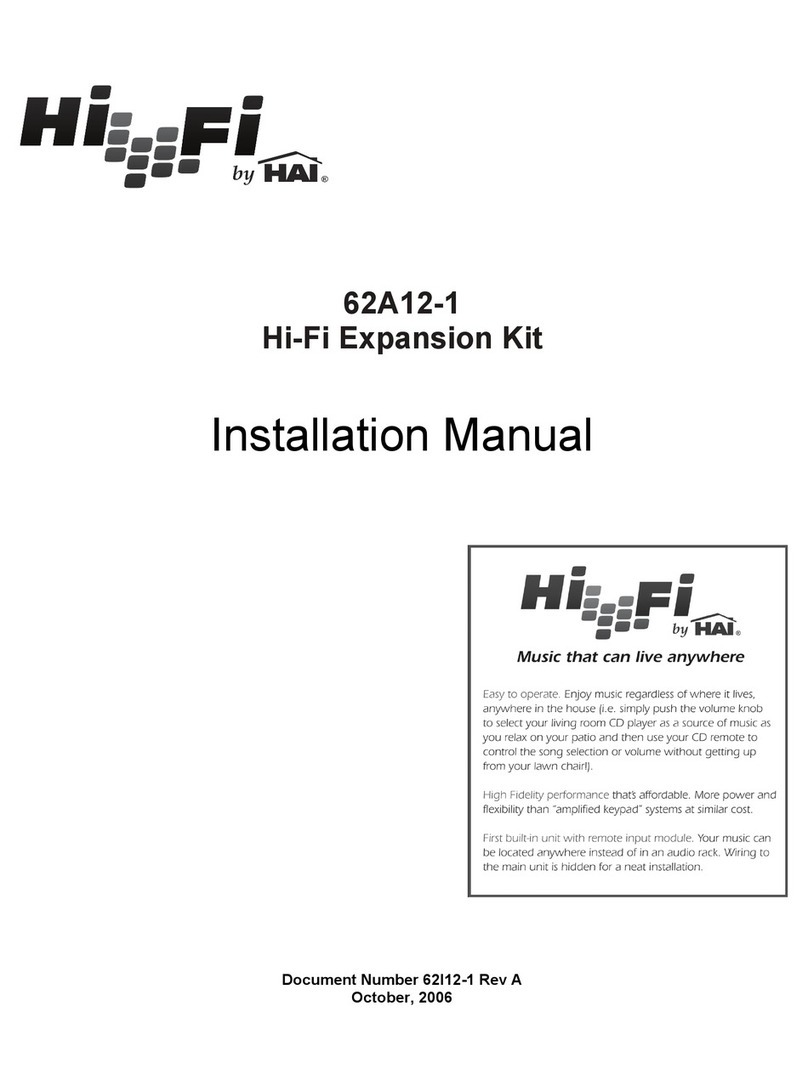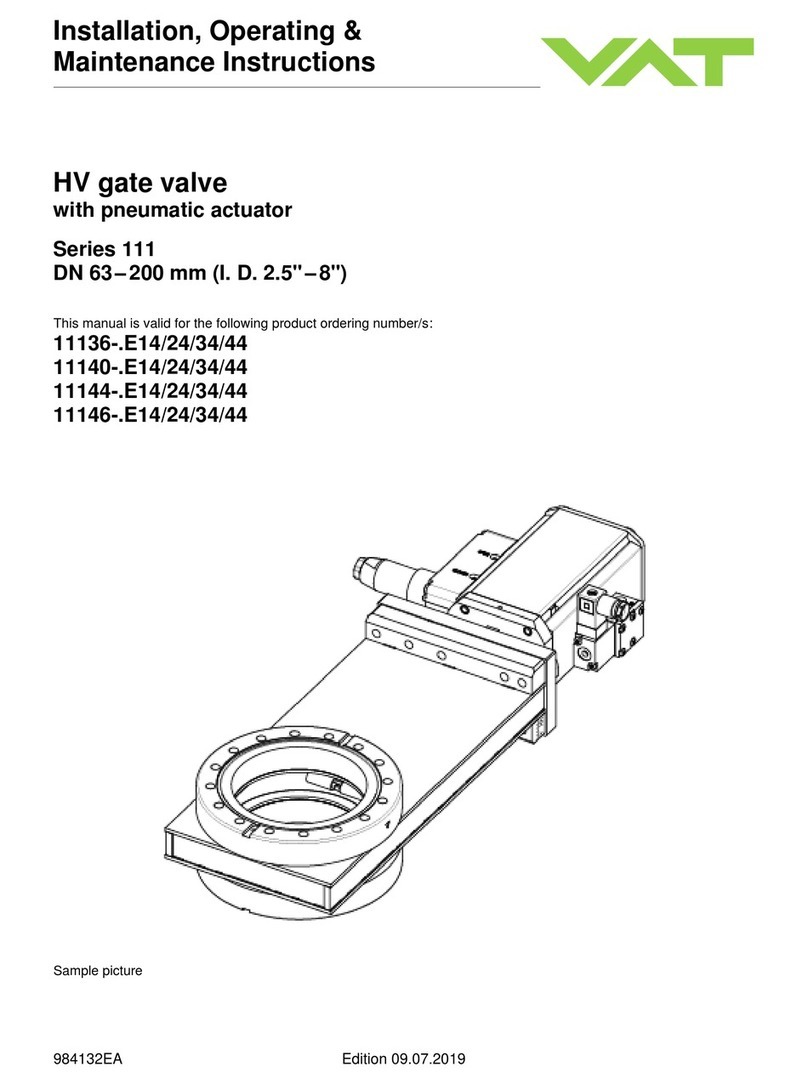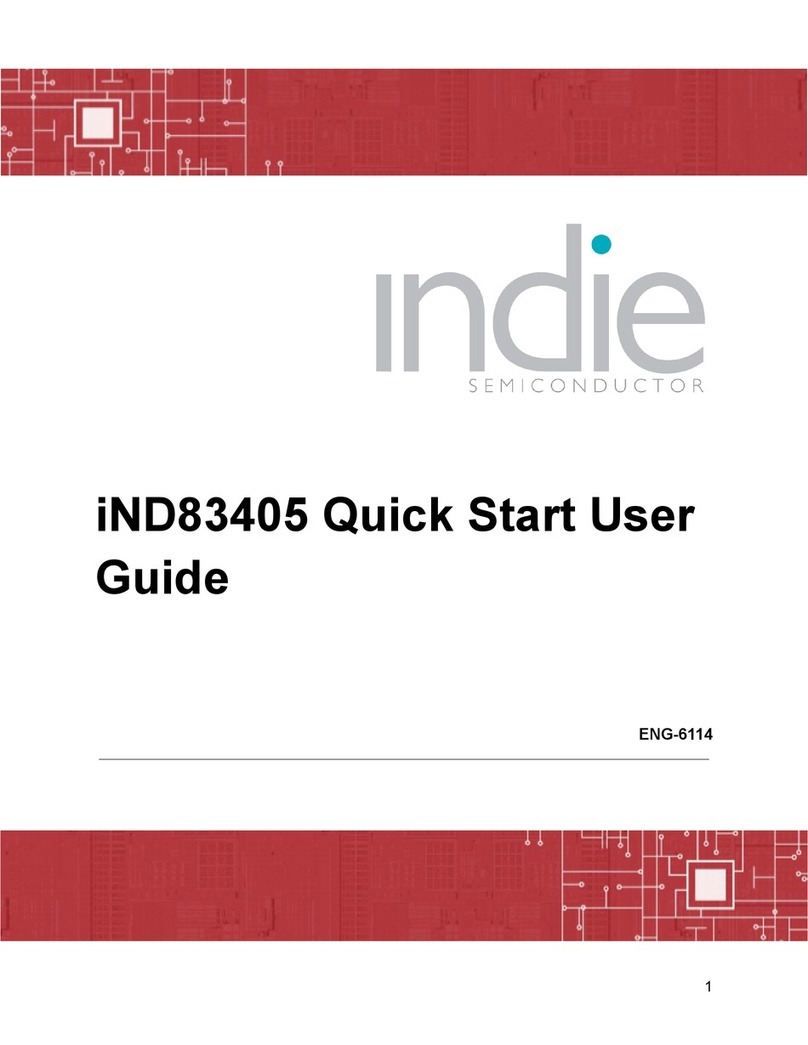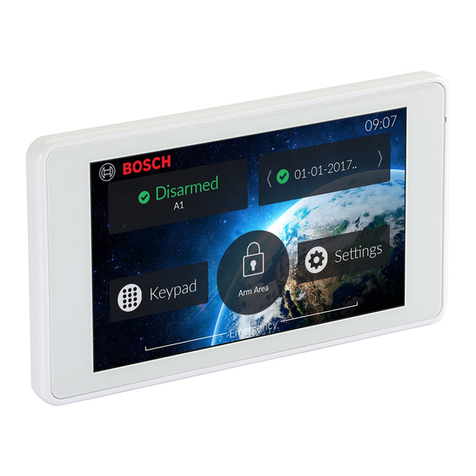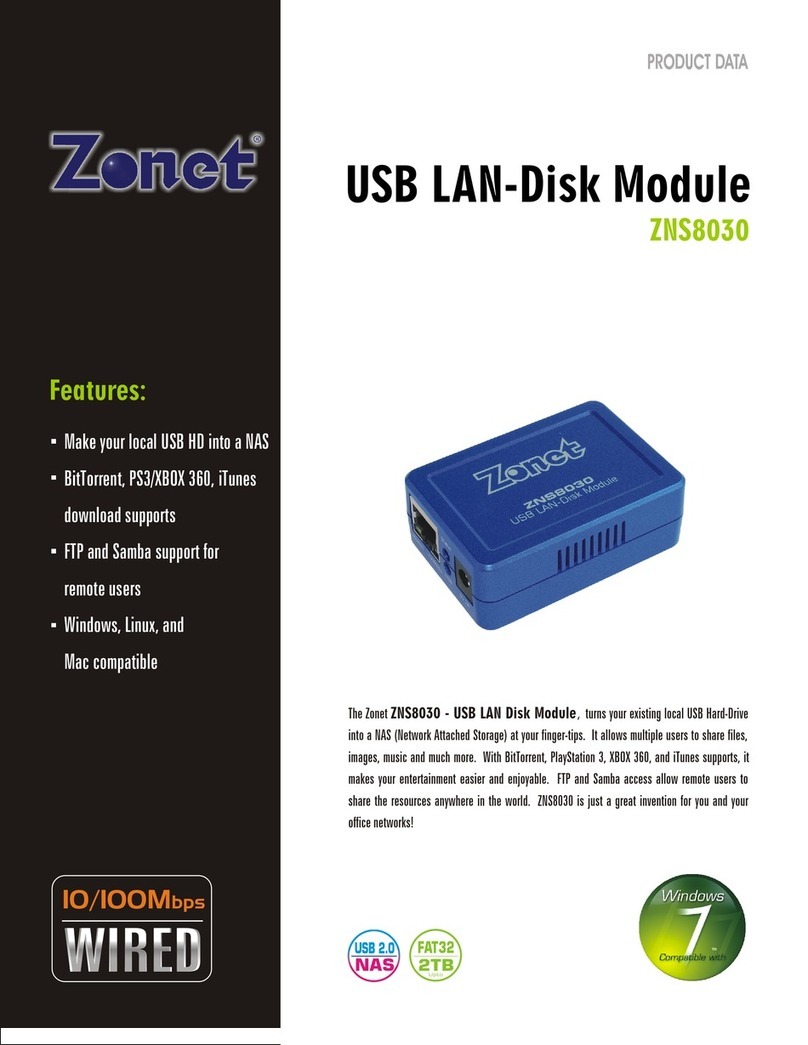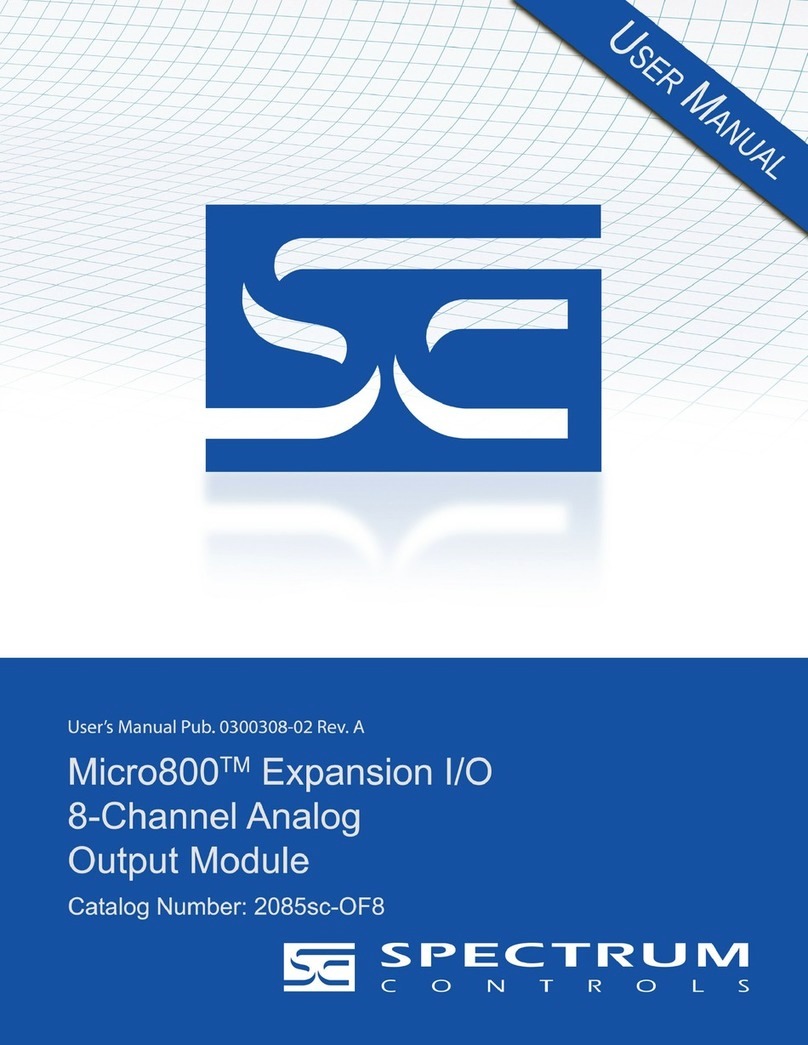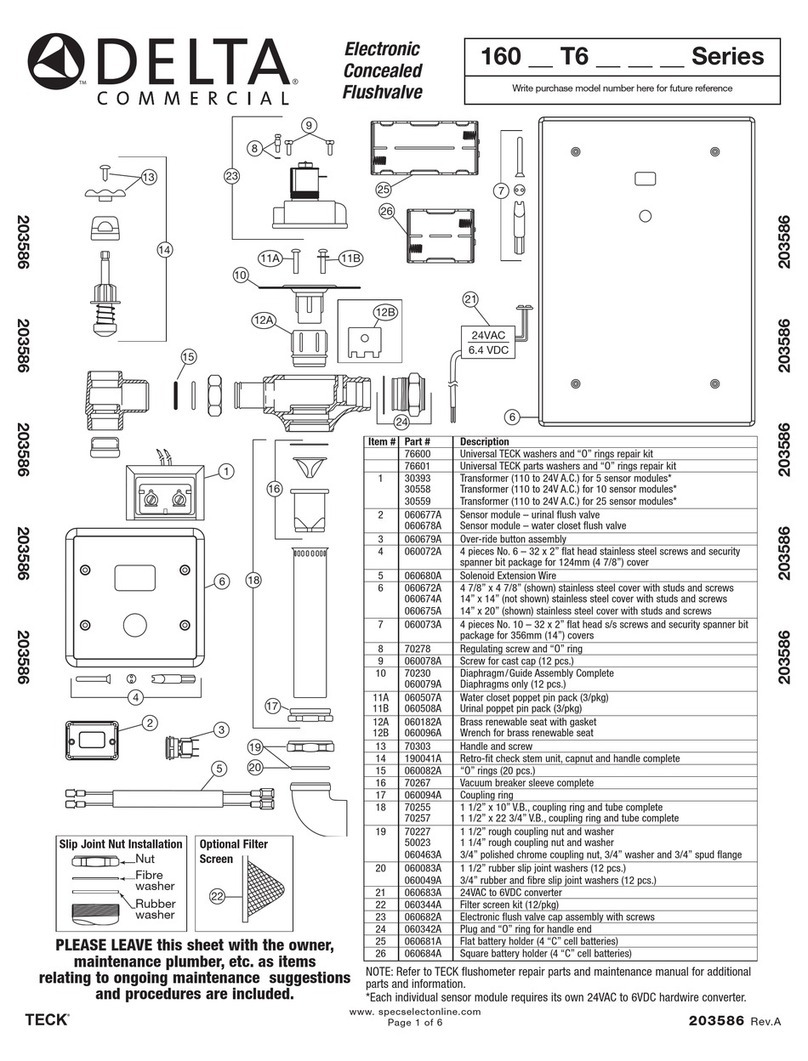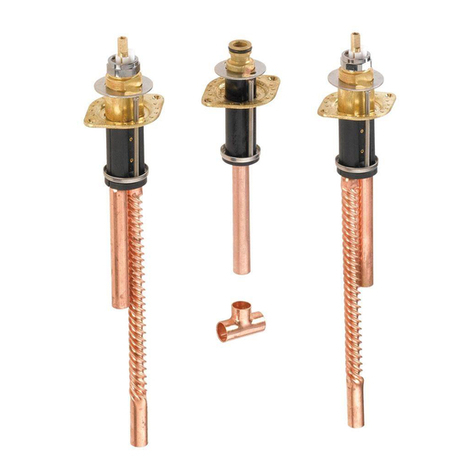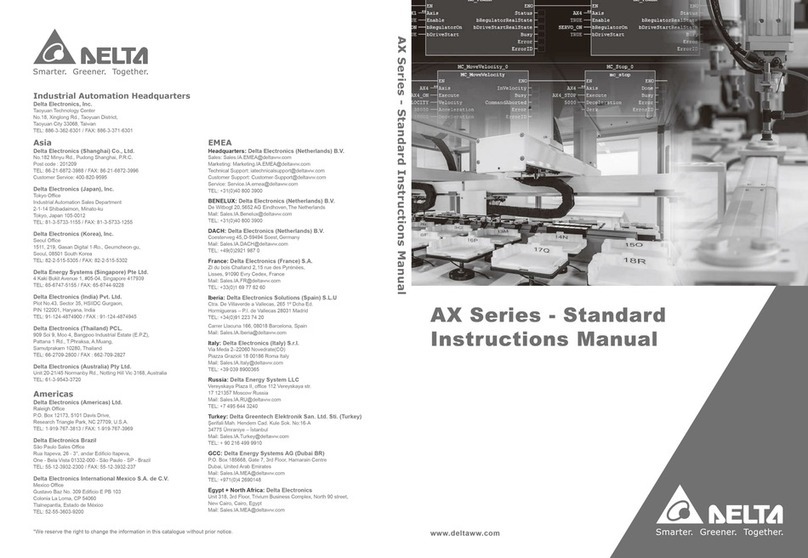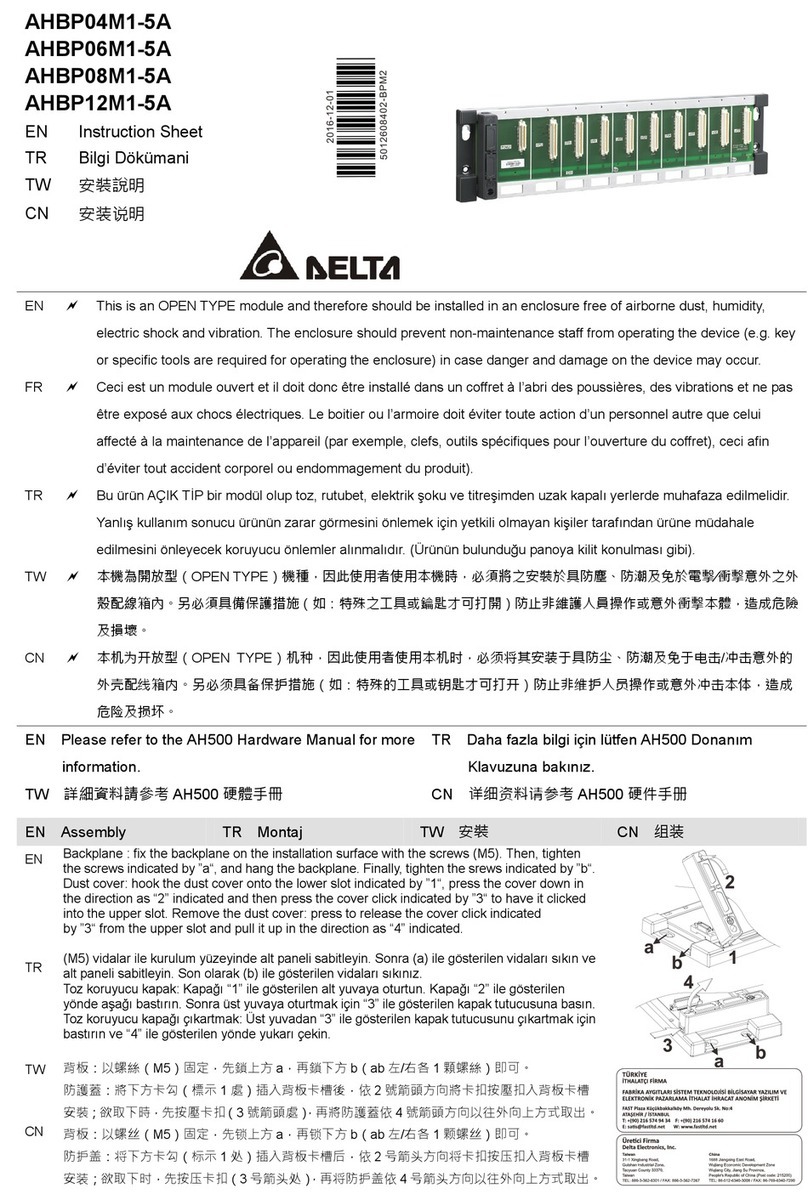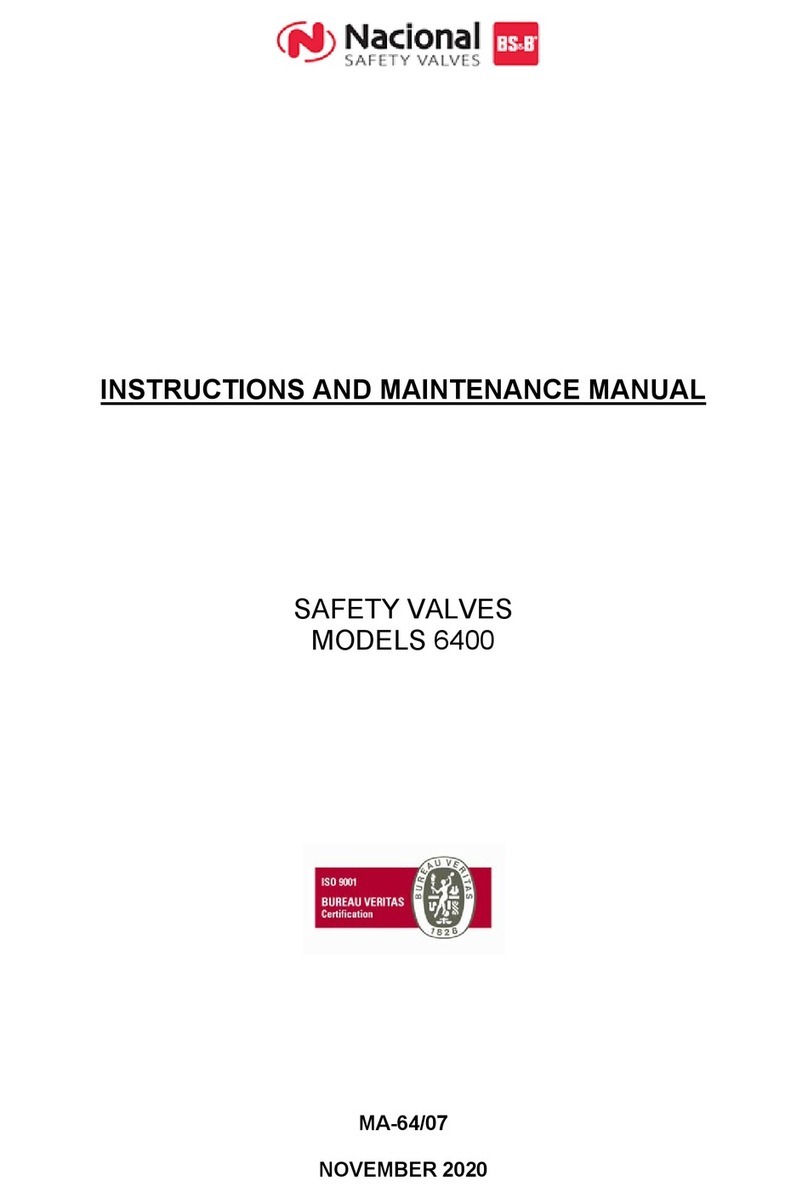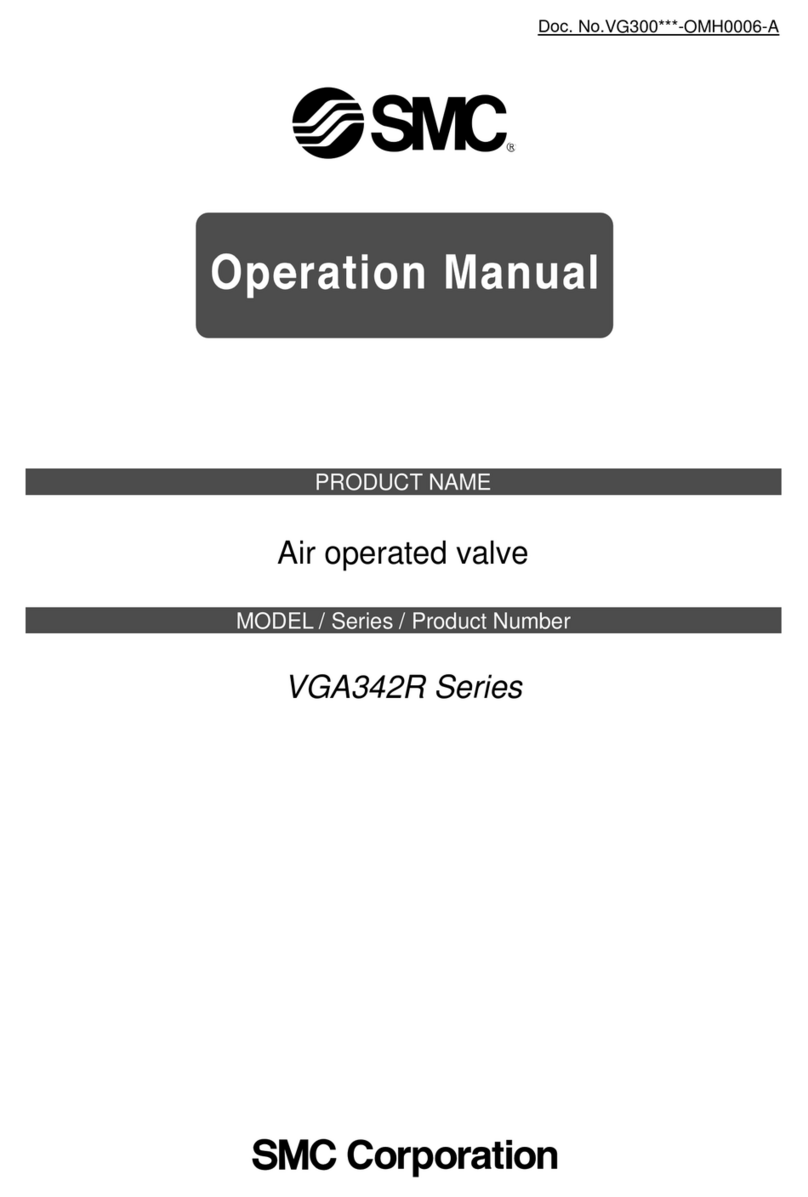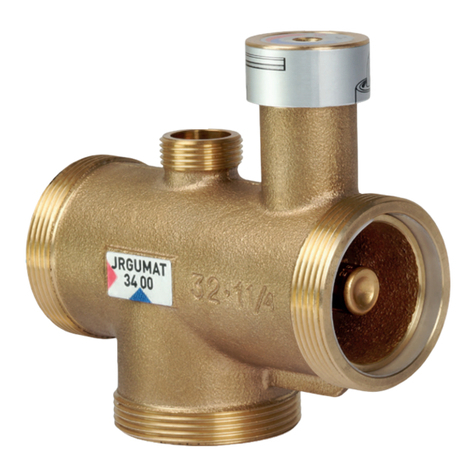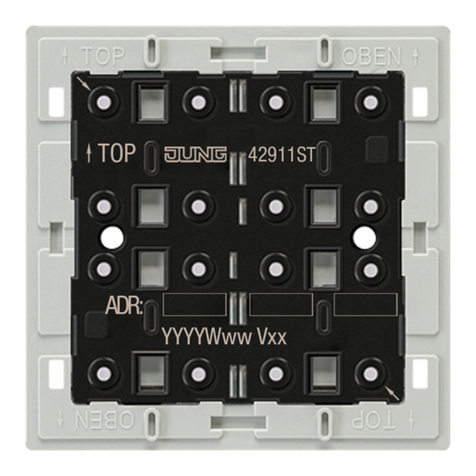
3. CR#2 ~ CR#5: The settings of average times of the signals at CH1 ~ CH4. Range: K1 ~ K20 (default = K10).
Please note that the average time settings at CR#2 ~ CR#5 only need to be written in once.
4. CR#6 ~ CR#9: The average of the signals at CH1 ~ CH4 obtained from the settings in CR#2 ~ CR#5. For
example, if the settings in CR#2 ~ CR#5 is 10, the content in CR#6 ~ CR#9 will be the average of the most
recent 10 signals at CH1 ~ CH4.
CR#10, CR#11, CR#16, CR#17, CR#22, CR#23, CR#28 and CR#29 are reserved.
5. CR#12 ~ CR#15: The present value of input signals at CH1 ~ CH4.
6. CR#18 ~ CR#21: The adjusted OFFSET value of CH1 ~ CH4, representing the analog input voltage or current
when the analog signal is converted into digital value 0.
The adjustable range of voltage: -5V ~ +5V (-4,000LSB ~ +4,000LSB)
The adjustable range of current: -20mA ~ +20mA (-4,000LSB ~ +4,000LSB)
7. CR#24 ~ CR#27: The adjusted GAIN value of CH1 ~ CH4, representing the analog input voltage or current when
the analog signal is converted into digital value 4,000.
The adjustable range of voltage: -4V ~ +20V (-3,200LSB ~ +16,000LSB)
The adjustable range of current: -16mA ~ +52mA (-3,200LSB ~ +10,400LSB)
Please note that: GAIN value – OFFSET value = +800LSB ~ +12,000LSB (voltage) or +800LSB ~ +6,400LSB (current)
When GAIN – OFFSET is small (steep oblique), the resolution of input signal will be finer and variation on the
digital value will be greater. When GAIN – OFFSET is big (gradual oblique), the resolution of input signal will be
rougher and variation on the digital value will be smaller.
8. CR #30: Error status value (See the table below)
Error status Content b15 ~ b8
b7
b6
b5
b4
b3
b2
b1
b0
Abnormal power supply K1(H’1) 0 0 0 0 0 0 0 1
Incorrect analog input
value K2(H’2) 0 0 0 0 0 0 1 0
Incorrect mode setting K4(H’4) 0 0 0 0 0 1 0 0
OFFSET/GAIN error K8(H’8) 0 0 0 0 1 0 0 0
Hardware malfunction K16(H’10)
0 0 0 1 0 0 0 0
Abnormal digital range K32(H’20)
0 0 1 0 0 0 0 0
Incorrect average times
setting K64(H’40)
0 1 0 0 0 0 0 0
Instruction error K128(H’80)
reserved
1 0 0 0 0 0 0 0
Note: Each error status is determined by the corresponding bit (b0 ~ b7) and there may be more than 2 errors occurring at the same time.
0 = normal; 1 = error
9. CR#31: The setting of RS-485 communication address (Range: 01 ~ 255, default = K1).
10. CR#32: The setting of RS-485 communication speed. b0: 4,800bps; b1: 9,600bps (default); b2: 19,200bps; b3:
38,400bps; b4: 57,600bps; b5: 115,200bps; b6 ~ b13: reserved; b14: high/low bit exchange of CRC checksum
(only valid in RTU mode); b15 = 0: ASCII mode; b15 = 1: RTU mode. ASCII data format: 7-bit, Even bit, 1 stop
bit (7, E, 1); RTU data format: 8-bit, Even bit, 1 stop bit (8, E, 1).
11. CR#33: For authorizations on some internal functions, e.g. OFFSET/GAIN tuning. The latched function will
store the output setting in the internal memory before the power is cut off.
12. CR#34: Firmware version of the model.
13. CR#35 ~ CR#48: Parameters for system use.
14. CR#0 ~ CR#34: The corresponding parameter addresses H’4032 ~ H’4022 are for users to read/write data by
RS-485 communication. When using RS-485, the user has to separate the module with MPU first.
a. Communication baud rate: 4,800/9,600/19,200/38,400/57,600/115,200bps
b. Modbus ASCII/RTU communication protocols: ASCII data format (7-bit, Even bit, 1 stop bit (7, E, 1)); RTU
data format (8-bit, Even bit, 1 stop bit (8, E, 1)).
c. Function: H’03 (read register data); H’06 (write 1 word datum to register); H’10 (write many word data to
register)
d. Latched CR should be written by RS-485 communication to stay latched. CR will not be latched if written by
MPU through TO/DTO instruction.
Adjusting A/D Conversion Curve
4.1 Explanation
Voltage Input Mode
+4,000
-4,000
10V
-6V-10V
0
Mode 0
Mode1
CR#1 mode 0 GAIN = 5V (4,000LSB)
OFFSET = 0V (0LSB)
CR#1 mode 1 GAIN = 6V (4,800LSB)
OFFSET = 2V (1,600LSB)
GAIN
The voltage input value when the digital
output value = K4,000
Range: -4V ~ +20V (-3,200LSB ~
+16,000LSB)
OFFSET
The voltage output value when the digital
input value = K0
Range: -5V ~ +5V (-4,000LSB ~ +4,000LSB)
GAIN - OFFSET Range: +1V ~ +15V (+800 LSB ~ +12,000
LSB)
Current Input Mode
+4,000
-12mA-20mA
4mA
0
GAIN
Mode 3
Mode 2
CR#1 mode 2 GAIN = 12mA (2,400LSB)
OFFSET = 4mA (800LSB)
CR#1 mode 3 GAIN = 10mA (2,000LSB)
OFFSET = 0mA (0LSB)
GAIN
The current input value when the digital
output value = K2,000
Range: -8mA ~ +40mA (-1,600LSB ~
+8,000LSB)
OFFSET
The current input value when the digital
output value = K0
Range: -10mA ~ +10mA (-2,000LSB ~
+2,000LSB)
GAIN - OFFSET Range: +2mA ~ +30mA (+400 LSB ~ +6,000
LSB)
The user can adjust the OFFSET/GAIN curves according to the actual needs by changing the OFFSET value
(CR#18 ~ CR#21) and GAIN value (CR#24 ~ CR#27).
LSB refers to “least significant bit”: In voltage input, 1LSB = 10V/8000 = 1.25mV; in current input, 1LSB = 20mA/4,000 =
5μA.
4.2 Program Example
Example 1: Set the OFFSET value of CH1as 0V (= K0LSB) and GAIN value as 2.5V (= K2,000LSB).
X0
K24
H0 K1
K0
K1
M1002
K0
K1
K0
K18 K0
K0
TO
TO
TO
TO
Write H’0 into CR#1 of analog input module
No.0 and set CH1 in mode 0 (voltage input
-10V ~ +10V).
Write H’0 into CR#33 and allow OFFSET/GAIN
tuning in CH1 ~ CH4
When X0 goes from Off to On, write the
OFFSET value K0LSB into CR#18 and the GAIN
value K2,000LSB into CR#24.
Example 2: Set the OFFSET value of CH2 as 2mA (= K400 LSB) and GAIN value as18mA (= K3,600LSB).
X0
K25
H18 K1
K0
K1
H0
K0
K1
K0
K19
K0
TO
TO
TO
TO
Write H’18 into CR#1 of analog input module
No.0 and set CH2 in mode 3 (current input
-20mA ~ +20mA).
Write H’0 into CR#33 and allow OFFSET/GAIN
tuning in CH1 ~ CH4
When X0 goes from Off to On, write the
OFFSET value K400LSB into CR#19 and the
GAIN value K3,600LSB into CR#25.
Trial Operation & Troubleshooting
LED Display
1. When the module is powered for the first time, POWER LED will be on and ERROR LED will be on for 0.5
second. After this, A/D LED will start to flash.
2. When the power supply is normal, POWER LED will be on and ERROR LED should be off. When the
power supply is less than 19.5V, ERROR LED will keep being on until the power supply is higher than
19.5V.
3. When controlled by RS-485, the RS-485 LED on the module will flash after receiving the RS-485
instruction.
4. When the input or output value exceeds the upper bound or falls below the lower bound after conversion,
ERROR LED will flash.
Program Example
K1
K0 K1
K0
K0
K0
M1000
FROM
TO
END
K2
K6
D0
H618
K10
D20 K4FROM
TO
K0
K2
= H6400 D0
M1002
= H6400 D0
Read the model name from K0 and see if it is DVP04AD-H2: H’6400.
If D0 = H’6400, set the input modes: (CH1, CH3) mode 0, (CH2, CH4) mode 3.
Set the average times in CH1 and CH2 as K10.
Read the average of input signals at CH1 ~ CH4 from CR#6 ~ CR#9 and store the 4 data in D20 ~ D23.
Relevant Instructions
API
78
D
FROM
P
Read CR data in special modules
Instruction
Explanation
: No. of special module (m1 = 0 ~ 7) : CR# in special module to be read
: Device for storing read data : Number of data to be read at a time
Program
Example
Read CR#24 of special module No.0 into D0 and CR#25 into D1. Only 2 groups of data are read
at a time (n = 2).
FROM K0 K24 D0 K2
API
79
D
TO P
Write CR data into special modules
Instruction
Explanation
: No. of special module (m1 = 0 ~ 7) : CR# in special module to be written
: Data to be written into CR : Number of data to be written at a time
Program
Example
Use 32-bit instruction DTO to write the content in D11 and D10 into CR#3 and CR#2 of special
module No.0. Only 1 group of data is written in at a time (n = 1).
K0 K2
K1
Remarks
Operand rules
1. : The No. of special modules connected to PLC MPU. No. 0 is the module closest to te
MPU. Maximum 8 modules are allowed to connected to a PLC MPU and they will not occupy
any I/O points.
2. : CR#. CR (control register) is the 49 16-bit memories built in the special module,
numbered in decimal as #0 ~ #48. All operation status and settings of the special module are
contained in the CR.
3. FROM/TO instruction is for reading/writing 1 CR at a time. DFROM/DTO instruction is for
reading/writing 2 CRs at a time.
CR #10 CR #9
Designated CR number
High er 16 -bit
4. Number of groups “n” to be transmitted: n = 2 in 16-bit instructions and n = 1 in 32-bit
instructions mean the same.
D0
D1
D2
D3
D4
D5
CR #5
CR #6
CR #7
CR #8
CR #9
CR #10
D0
D1
D2
D3
D4
D5
Designated CR
16-bit instruction when n=6
32-bit instruction when n=3
M1083 for switching instruction modes in EH2 series models
1. When M1083 = Off, during the execution of FROM/TO instruction, all external or internal
interruption subroutines will be forbidden. The interruptions are allowed only after FROM/TO
instruction finishes its execution. FROM/TO instruction can also be used in an interruption
subroutine.
2. When M1083 = On and an interruption signal occurs during the execution of FROM/TO
instruction, the interruption will be processed first (with a 100us delay) and the execution of
FROM/TO will be stopped. After the interruption subroutine finishes its execution, the
program will jump to the next instructio of FROM/TO. FROM/TO cannot be used in an
interruption subroutine.
The content of this instruction sheet may be revised without prior notice. Please consult our distributors or
download the most updated version at http://www.delta.com.tw/industrialautomation



